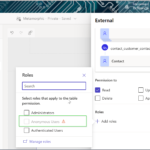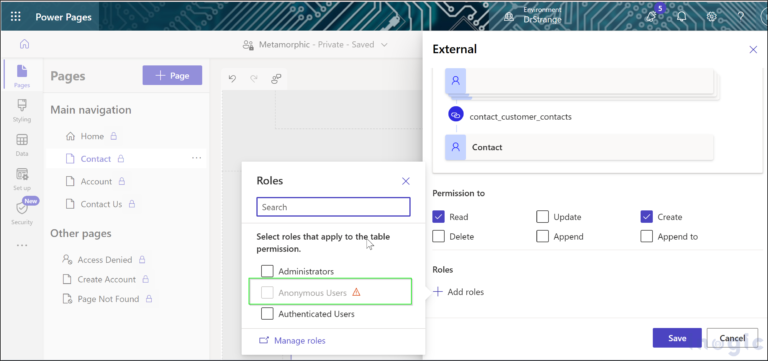Small and midsize businesses (SMBs) represent a huge opportunity for sellers. According to the U.S. Small Business Administration (SBA), 99.9% of U.S. businesses are small businesses. That means there are a lot of prospects to go after. Even better, SMBs tend to make decisions faster than enterprise companies, in part because there are fewer decision-makers involved. What does that mean for you? Faster sales cycles and more inked deals.
But winning an SMB sale isn’t as easy as picking up the phone. There’s a specific art to it. In this article, we’ll explain what an SMB is and break down how salespeople should operate with small business sales clients. We’ll also explore different strategies for business-to-business (B2B) sales among SMB clients.
What you’ll learn:
Grow revenue faster with a single source of truth
Discover how Sales Cloud uses data and AI to help you build relationships and close deals fast.


What is an SMB (small and midsize business)?
SMB stands for small and midsize business. Generally, small businesses have fewer than 100 employees and midsize businesses have fewer than 1,000, but the numbers are subjective. The Small Business Association, for example, classifies small businesses by the number of employees and average annual receipts, and it varies by industry.
In many cases, SMB owners are still very much involved in all the decision-making, and they manage operations differently when compared to enterprises, which have multiple layers of bureaucracy.
What are the benefits of selling to SMBs?
Almost two-thirds of SMB leaders are looking for growth, according our Small and Medium Business Trends Report. What starts off as an account with low-value sales could turn into a long-term customer, depending on the customer’s desire to expand. On top of that, you can lean into these other advantages of selling to small businesses.
- Shorter sales cycles: Many sellers focusing on SMB clients will tell you it takes weeks or months to close a deal, rather than the months-to-quarter-long sales cycles in enterprise deals.
- Faster decisions: You’re building relationships with only one person or a handful of people at an SMB, so you can reach the final say more quickly and with less input.
- Vast selection of opportunities: The SBA cites approximately 33.1 million small businesses in the U.S. And every year more are started — so there’s always a fresh opportunity waiting out there.
Trending Articles

3 Ways Generative AI Will Help Marketers Connect With Customers
3 min read

Learn AI Skills on Trailhead
6 min read
What are the challenges of selling to SMBs?
There are a handful of reasons why sales to SMBs present a different set of challenges than selling to enterprise-level corporations.
1. SMBs have smaller budgets, so every dollar counts
SMBs generally have smaller budgets, tighter operating margins, and less liquid resources. Small business owners don’t always have adequate working capital to grow their operations or invest in big solutions. They’re more likely to scrutinize each deal and rely on subscription payments.
To overcome an SMB’s objections to pricing, offer low-commitment, month-to-month options that minimize the up-front cost. In these B2B sales, your company must deliver consistent ongoing value to encourage clients to keep doing business with you.
Also, be patient. If the timing isn’t right, SMBs won’t place an order right away. An SMB’s cash flow may be limited, and they may need to wait a few months before converting.
2. Limited time for SMBs means fewer chances for you to sell
Small business owners are often busy around the clock. They’re more likely to work seven days a week and put in overtime to keep things running smoothly. An SMB owner oversees it all when it comes to applying for funding, marketing, maintaining employee engagement, sales, customer service, invoicing, and all the tasks associated with running a business.
Given that small business owners are constantly strapped for time, they may be hesitant to take any pitch meetings. Be sensitive to their limited availability by working around their schedule. Your flexibility will go a long way in helping to convert the buyer into a happy customer.
3. Not all SMBs want to grow, and not all of them should
While some SMBs scale and grow quickly without consequence, there is such a thing as growing too fast. Many small businesses will benefit more from focusing on stability and self-sufficiency than from setting their sights on exponential growth.
However, small business sales reps can still introduce value by offering solutions that improve operational efficiency, streamline processes, and minimize costs. That way, instead of growing top-line revenue, your customers can focus more on how they can increase their profits.
4. Many SMBs prefer scalable operational expenses over big purchases
This is most commonly seen in software sales. Back in the days of traditional client-server software packages, technology trends favored large enterprises. Software packages required a cash commitment up front, backed by a staff of in-house IT professionals for implementation, maintenance, and security. Few SMBs had the resources for those kinds of purchases, and those that did often preferred to avoid such large expenditures.
However, software as a service (SaaS) has changed the game. In charging a monthly fee that can be scaled up or down as an organization’s needs evolve, many software companies opened their services and technology to SMBs. Small businesses can now afford technology that was previously unavailable to them.
If your company is able, offer a subscription payment plan or another method to reach SMBs with strict budgets. This helps by simultaneously improving your monthly recurring revenue (MRR) and offering your clients more payment options. Salespeople can also turn this into a quick win by offering free trials and starter packages. These help clients better understand the benefits of your products or services, experience their advantages firsthand, and then justify the purchase.
Get articles selected just for you, in your inbox
How do you sell to SMBs?
When you sell to a small business, many of your tried-and-true selling techniques apply. Still, there will be times when you need to tailor your approach. This could look like showing ROI in a different way, speaking to specific selling points, focusing on simplicity, and more.
1. Focus on your client’s ROI
Make a strong case that shows how your goods or services will give your prospects a meaningful return on their investment. Get to know the owners, how they work, the biggest pain points they face, and what matters most to them. Then you can pitch a solution that helps drive their vision forward. Your solution should plainly state how it’s the answer to your client’s specific needs, whether that’s driving extra website traffic or moving more products off of shelves.
2. Respect the owner’s limited time
When it comes to selling to SMBs, you need to be the flexible one in the relationship. Setting prices, determining service terms, and even worrying about your competitors all take a back seat to getting a small business owner to give you their precious time. Make it a rule to set and keep appointments on your end, but stay adaptable so you can accommodate your client’s schedule.
3. Keep interactions small, intimate, and personal
A small platoon of sharply dressed businesspeople may be the last thing a small business owner wants to deal with. Your lead may feel more comfortable in jeans than slacks and may prefer to do business with someone who feels approachable.
Develop a true understanding of your prospect’s personal and professional pain points. You need to first build rapport, then a relationship, and the rest will flow more naturally.
4. Focus on ease of use
No matter what you sell, small business clients must be able to implement it seamlessly into their existing processes. Offer solutions that integrate seamlessly with their current business and ensure they’re helped and trained as needed. The easier your offering is to use, the more likely your client will immediately be able to take advantage of your solution to save time, trim costs, or increase revenue.
5. Look for opportunities beyond the sale
Continue to deliver value as you enter the post-sales period. SMBs are relationship-oriented. What’s especially important to your buyers is post-sales service, so reassure them and provide them with a plan for onboarding and continuing customer success.
This could include value-driven follow-ups, customer education, and an evolving understanding of your client’s unique challenges and needs. You can train your clients to be expert users, and some of your best customers could even turn into brand ambassadors, further building on your relationship.
The art of small business sales is to know small businesses
SMBs have a variety of motivations, and your solutions need to help them reach their goals. A successful B2B salesperson finds a way to help clients achieve their dreams. Think beyond your quarterly sales goals, and look to build client relationships that will span your career. Whether clients want to grow or stay as is — or whether their budget is lofty or modest — you should strive to help them increase efficiency, decrease overall costs, and proactively manage their revenue. Be a force for good for their business.
Want to take a leading CRM for a test drive?
Go on our Guided Tour to see how Sales Cloud boosts productivity at every stage of the sales cycle.














